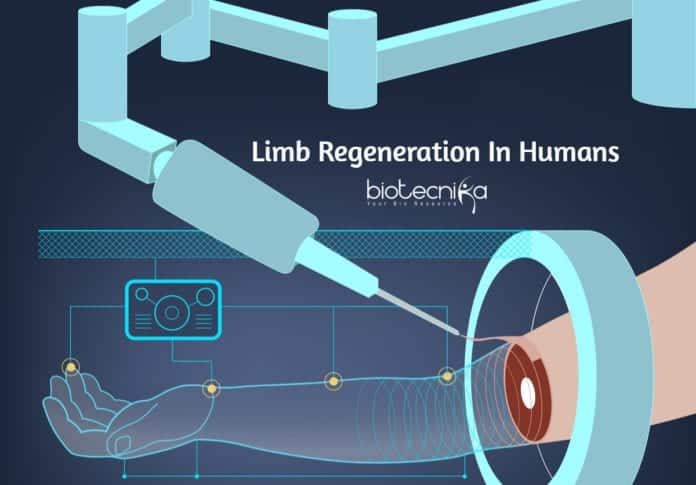Limb Regeneration In Humans
In a recent study, a team of scientists has found that Humans have a salamander-like ability to regrow cartilage in joints.
Salamanders are well-known for being able to regrow new limbs, but according to scientists, a similar process takes place in the human body.
The researchers from Duke Health have identified a mechanism for cartilage repair, which they say could have significant implications. It may potentially open doors to new treatments for osteoarthritis. It is the world’s most common joint disorder. It may also pave the way for further research on methods to grow human body parts.
According to Virginia Byers Kraus, this research could provide the foundation for new approaches to repair joint tissues and possibly whole human limbs. She added that the ability of humans to regenerate limbs is the critically missing component of this regulatory circuit.
Limb Regeneration In Humans- The Study
The scientists determined the age of the cartilage of the human body by a technique known as “mass spectrometry.” This analysis revealed that cartilage has different “ages” depending on where it is located- young in the ankles, middle-aged in the knees, and old in the hips.
Prof Kraus added that the
proteins that the scientists discovered a huge difference in the chemical modifications of the proteins in the hip, knee, and ankle cartilages. These types of changes build up if the tissue is not repairing or turning over the process of getting rid of old protein while making new protein.The scientists found that Hip cartilage proteins had an abundance of chemical modifications of proteins. Whereas, the knee had moderate amounts and the ankle very few proteins with these chemical modifications. This showed that the ankle was in a high state of repair or turnover, the hip in a low state of repair, and the knee in between.
These results mimic those seen in animals that regenerate their limbs, beginning at the furthest tips.
Scientists also found that humans make use of some of the same molecules called microRNA that is key to limb regeneration in salamanders and other animals, which can regrow body parts, such as zebrafish, African freshwater fish, and other lizards.
Prof Kraus said that In human cartilage, these molecules were present at a high level in human ankle cartilages, intermediate in knees, and low in hips. She added that this is the first insight that human cartilage repair is linked to processes used in limb regeneration.
Limb Regeneration In Humans- The Way Ahead
According to the researchers, the results could explain why ankle injuries heal faster than knee and hip injuries, and why the latter two develop into arthritis less frequently.
The study has significant implications; the team says because it broadens our understanding of the microRNAs. This could be developed into medicines to treat or even reverse arthritis.





























